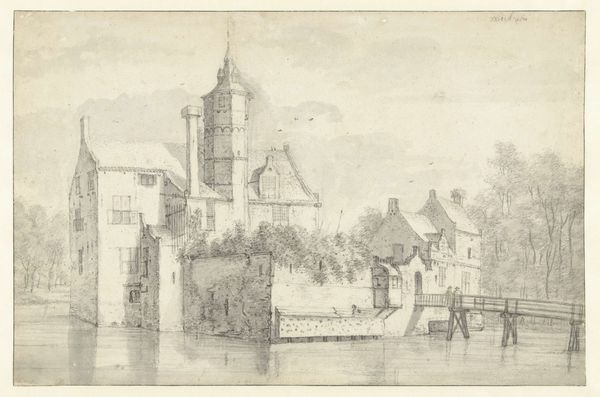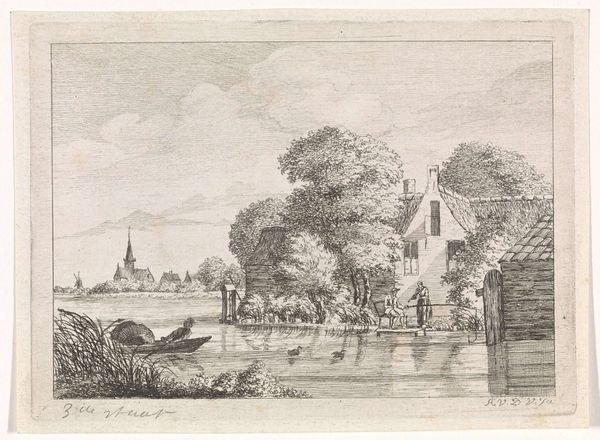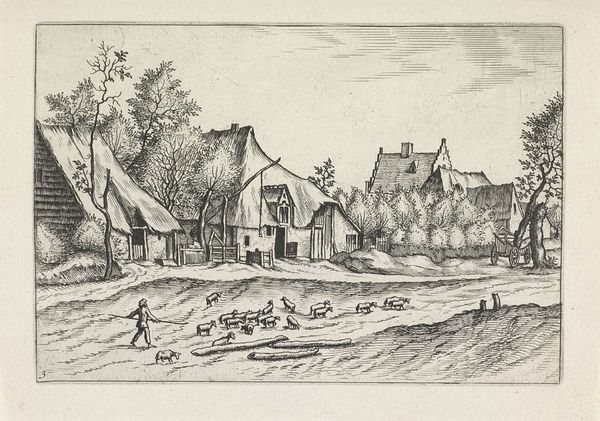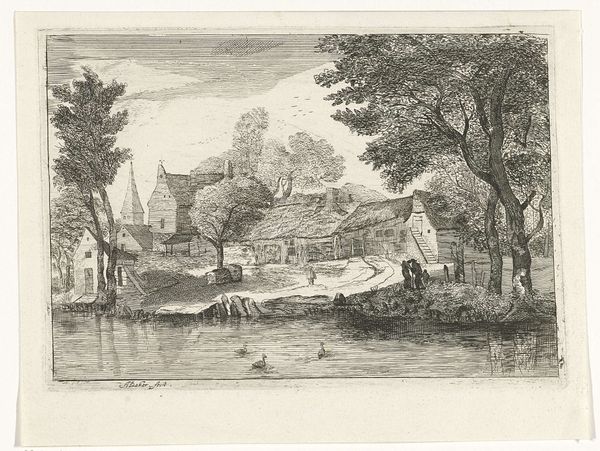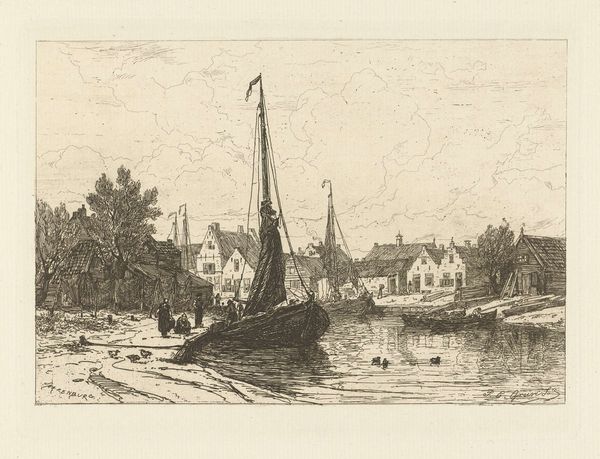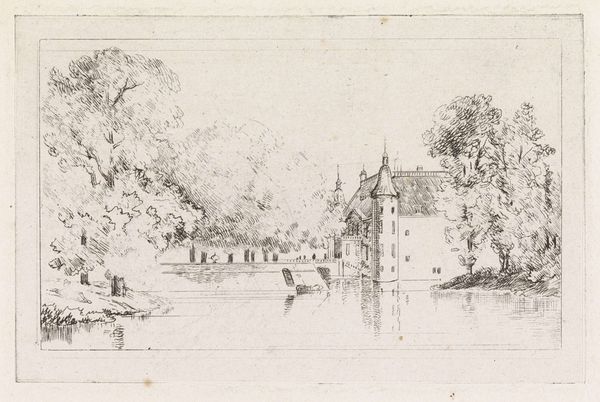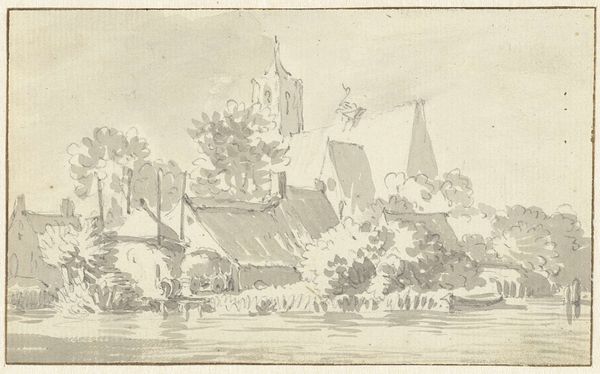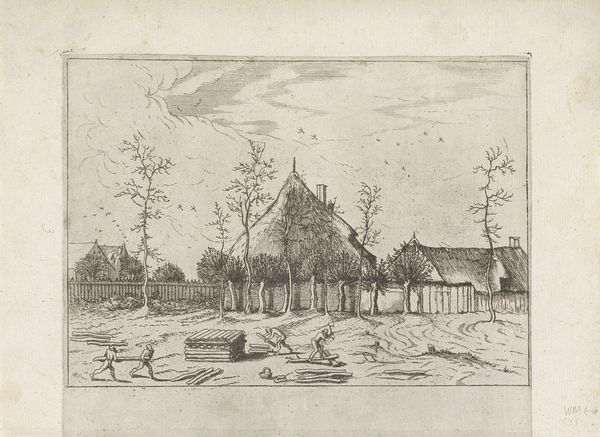
drawing, paper, ink
#
drawing
#
dutch-golden-age
#
landscape
#
paper
#
ink
#
cityscape
#
realism
Dimensions: height 41 mm, width 69 mm
Copyright: Rijks Museum: Open Domain
Curator: This is Cornelis Steffelaar’s “Dorp langs het water,” created in 1845 using ink on paper. Editor: Immediately I'm struck by its serenity. The gentle ripples on the water, the unassuming architecture – it speaks of a quiet, almost untouched life. Curator: It certainly captures a slice of 19th-century Dutch life, doesn’t it? Ink drawings like this offer a unique window into the era’s aesthetic sensibilities and Steffelaar’s artistic process. Consider the way he carefully renders the textures of the rooftops. Editor: The composition also makes me think about access to waterways during that time, and how that shaped community development. Who had access to these canals and what were the economic implications? Curator: Those are astute points. Drawings were often preliminary studies for larger paintings, a cost-effective medium when paint was expensive. They were also more readily available on the market for growing urban middle-classes. I see a lovely tension in the mark-making. Look at how economically the artist has captured detail while at the same time building up such volume with subtle cross-hatching. Editor: And thinking about Steffelaar himself, how does his identity and social standing affect his perspective of this “dorp?" Were these nostalgic renderings? What audience did they cater to? Perhaps these idyllic portrayals reinforced certain social narratives about Dutch national identity and values in a period of intense social change. Curator: It’s a valuable exercise to consider how consumption of artwork reinforces societal structures. The method of applying the ink to paper, the layering, was it about a form of repetitive labour? We know that many women and people from lower socio-economic backgrounds also produced artworks, perhaps their subject matter choices tell alternative narratives. Editor: Yes, considering Steffelaar within a broader context of other Dutch artists from the time helps us to critically engage with assumptions. The scale invites closer examination – we’re encouraged to slow down. Curator: And with each viewing we’re invited to engage with the artist's skillful hand and the subtle intricacies of production. Editor: Exactly. By viewing it as an intersection of art, labour, and cultural commentary we get closer to unpacking the narratives of both then and now.
Comments
No comments
Be the first to comment and join the conversation on the ultimate creative platform.
